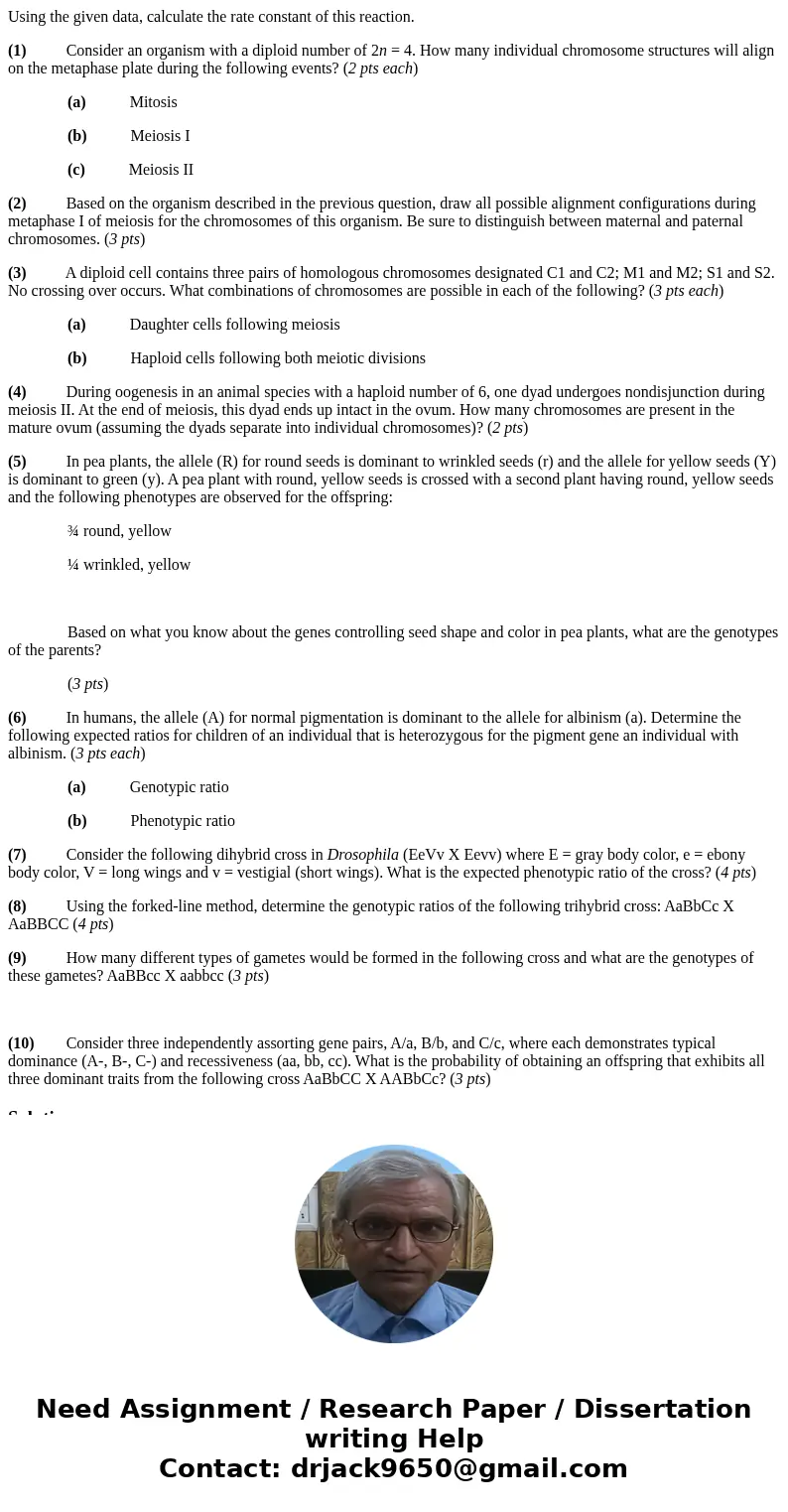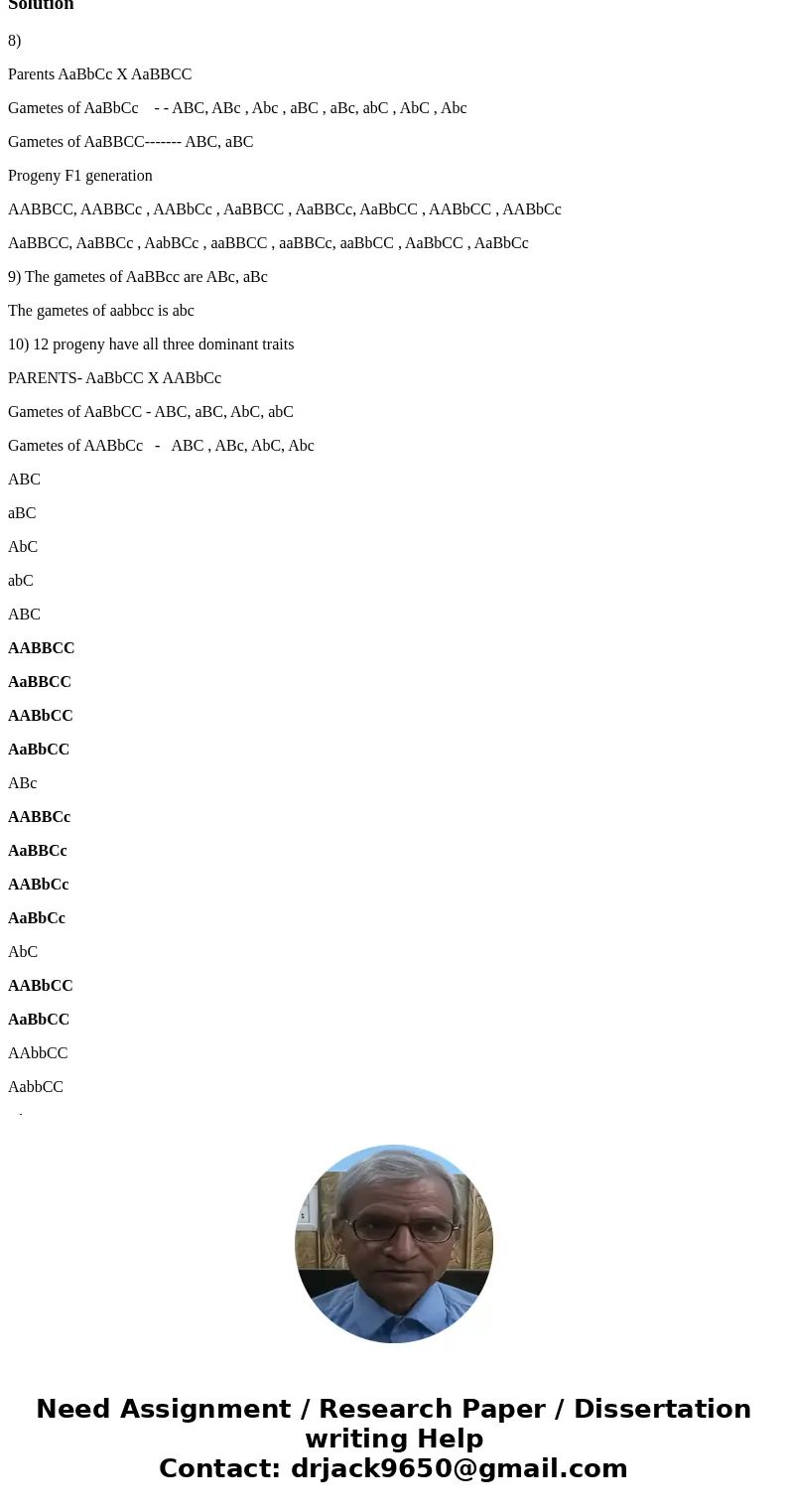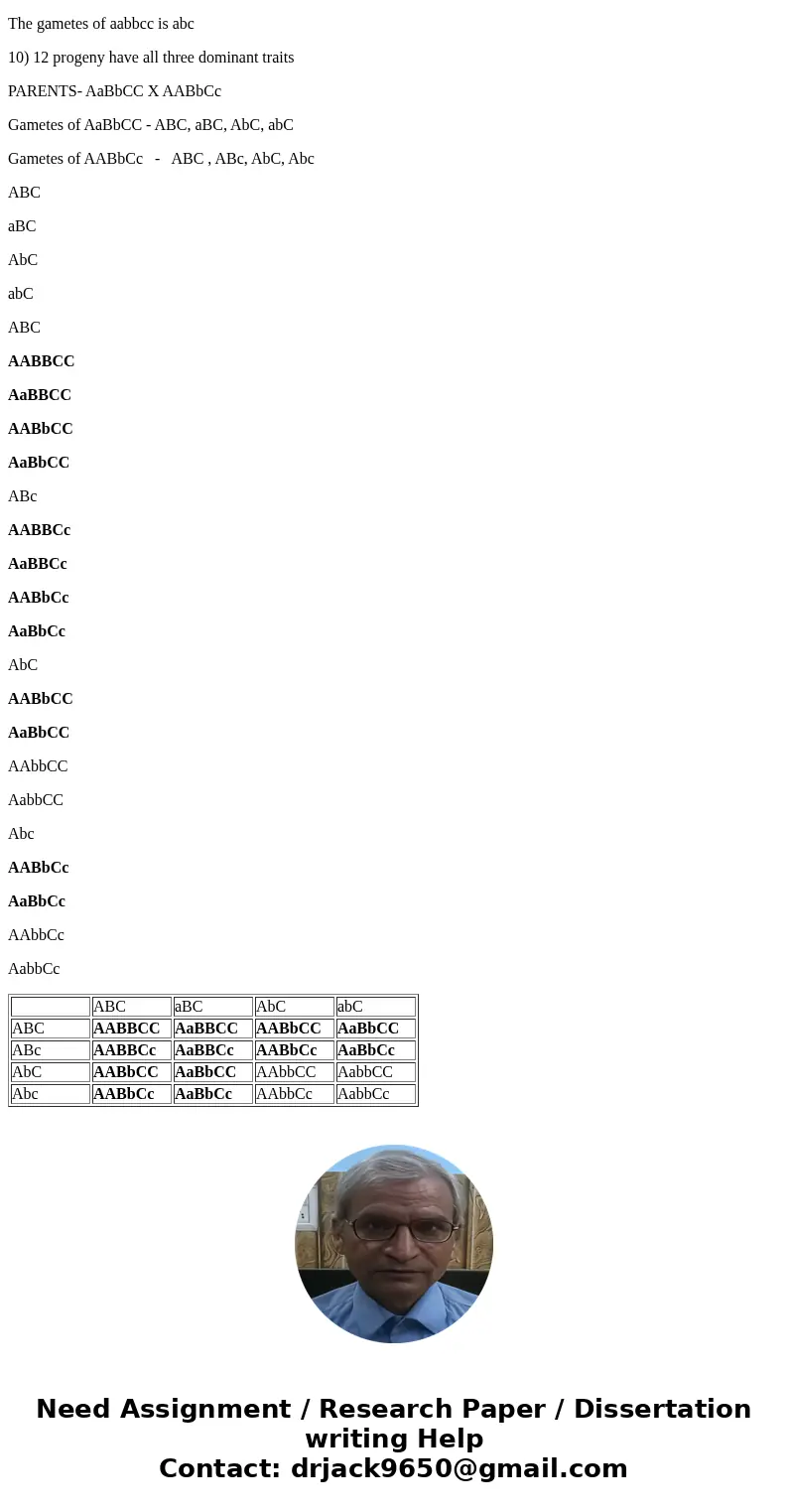Using the given data calculate the rate constant of this rea
Using the given data, calculate the rate constant of this reaction.
(1) Consider an organism with a diploid number of 2n = 4. How many individual chromosome structures will align on the metaphase plate during the following events? (2 pts each)
(a) Mitosis
(b) Meiosis I
(c) Meiosis II
(2) Based on the organism described in the previous question, draw all possible alignment configurations during metaphase I of meiosis for the chromosomes of this organism. Be sure to distinguish between maternal and paternal chromosomes. (3 pts)
(3) A diploid cell contains three pairs of homologous chromosomes designated C1 and C2; M1 and M2; S1 and S2. No crossing over occurs. What combinations of chromosomes are possible in each of the following? (3 pts each)
(a) Daughter cells following meiosis
(b) Haploid cells following both meiotic divisions
(4) During oogenesis in an animal species with a haploid number of 6, one dyad undergoes nondisjunction during meiosis II. At the end of meiosis, this dyad ends up intact in the ovum. How many chromosomes are present in the mature ovum (assuming the dyads separate into individual chromosomes)? (2 pts)
(5) In pea plants, the allele (R) for round seeds is dominant to wrinkled seeds (r) and the allele for yellow seeds (Y) is dominant to green (y). A pea plant with round, yellow seeds is crossed with a second plant having round, yellow seeds and the following phenotypes are observed for the offspring:
¾ round, yellow
¼ wrinkled, yellow
Based on what you know about the genes controlling seed shape and color in pea plants, what are the genotypes of the parents?
(3 pts)
(6) In humans, the allele (A) for normal pigmentation is dominant to the allele for albinism (a). Determine the following expected ratios for children of an individual that is heterozygous for the pigment gene an individual with albinism. (3 pts each)
(a) Genotypic ratio
(b) Phenotypic ratio
(7) Consider the following dihybrid cross in Drosophila (EeVv X Eevv) where E = gray body color, e = ebony body color, V = long wings and v = vestigial (short wings). What is the expected phenotypic ratio of the cross? (4 pts)
(8) Using the forked-line method, determine the genotypic ratios of the following trihybrid cross: AaBbCc X AaBBCC (4 pts)
(9) How many different types of gametes would be formed in the following cross and what are the genotypes of these gametes? AaBBcc X aabbcc (3 pts)
(10) Consider three independently assorting gene pairs, A/a, B/b, and C/c, where each demonstrates typical dominance (A-, B-, C-) and recessiveness (aa, bb, cc). What is the probability of obtaining an offspring that exhibits all three dominant traits from the following cross AaBbCC X AABbCc? (3 pts)
Solution
8)
Parents AaBbCc X AaBBCC
Gametes of AaBbCc - - ABC, ABc , Abc , aBC , aBc, abC , AbC , Abc
Gametes of AaBBCC------- ABC, aBC
Progeny F1 generation
AABBCC, AABBCc , AABbCc , AaBBCC , AaBBCc, AaBbCC , AABbCC , AABbCc
AaBBCC, AaBBCc , AabBCc , aaBBCC , aaBBCc, aaBbCC , AaBbCC , AaBbCc
9) The gametes of AaBBcc are ABc, aBc
The gametes of aabbcc is abc
10) 12 progeny have all three dominant traits
PARENTS- AaBbCC X AABbCc
Gametes of AaBbCC - ABC, aBC, AbC, abC
Gametes of AABbCc - ABC , ABc, AbC, Abc
ABC
aBC
AbC
abC
ABC
AABBCC
AaBBCC
AABbCC
AaBbCC
ABc
AABBCc
AaBBCc
AABbCc
AaBbCc
AbC
AABbCC
AaBbCC
AAbbCC
AabbCC
Abc
AABbCc
AaBbCc
AAbbCc
AabbCc
| ABC | aBC | AbC | abC | |
| ABC | AABBCC | AaBBCC | AABbCC | AaBbCC |
| ABc | AABBCc | AaBBCc | AABbCc | AaBbCc |
| AbC | AABbCC | AaBbCC | AAbbCC | AabbCC |
| Abc | AABbCc | AaBbCc | AAbbCc | AabbCc |



 Homework Sourse
Homework Sourse